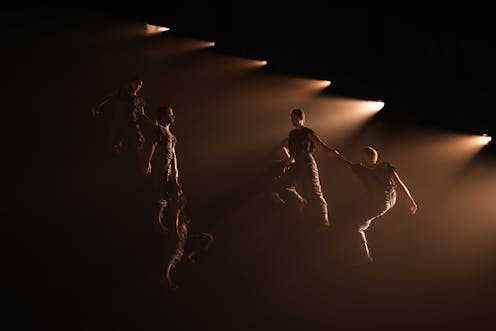
Review: And the Earth will Swallow Them Whole, choreographed by Rachel Arianne Ogle
The first act of And the Earth will Swallow Them Whole, performed in Perth’s aptly-named Studio Underground, positions the audience around the edge of a three-sided balcony looking down into the black space and an open-topped grand piano.
Pianist and composer Gabriella Smart begins with a solo rendition of Beethoven’s Moonlight Sonata. She is subsequently joined by composer Luke Smiles who manipulates and extends the piano sound to co-create a live score that transforms the familiar piano sonata into something new and unrecognisable.
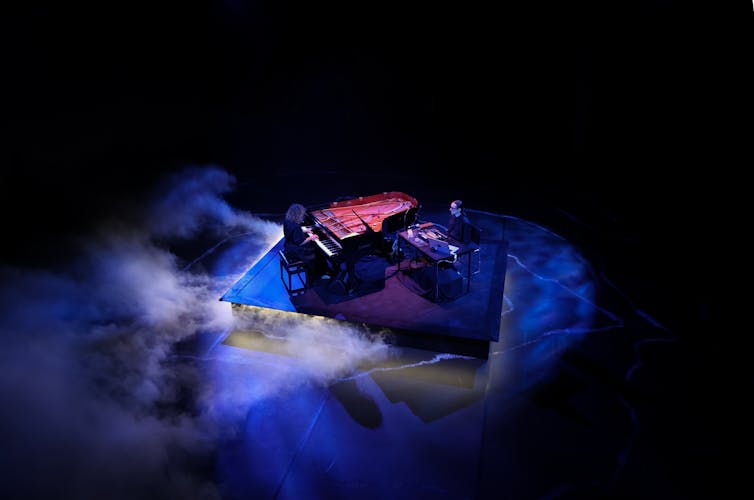
Created on an electronically prepared piano, the score is a disconcerting amalgam of classical piano and electronic distortion. At times we see the pianist’s hands at work but no longer hear sounds that you’d usually associate with a piano.
It is an unsettling and deeply engaging prelude to the entrance of the dancers.
As the ensemble of six dancers come into view they seem, at first, weightless, almost adrift. The added plane provided by watching them from above creates an almost vertiginous effect in the viewer.
The longer you look down the more your sense of perspective is challenged and unmoored. Akin to that tingling sensation in the soles of your feet when you keep your eyes on the track as the train pulls into the station, there is a sense of simultaneously falling and standing still. The movement of the dancers seems to mirror that state.
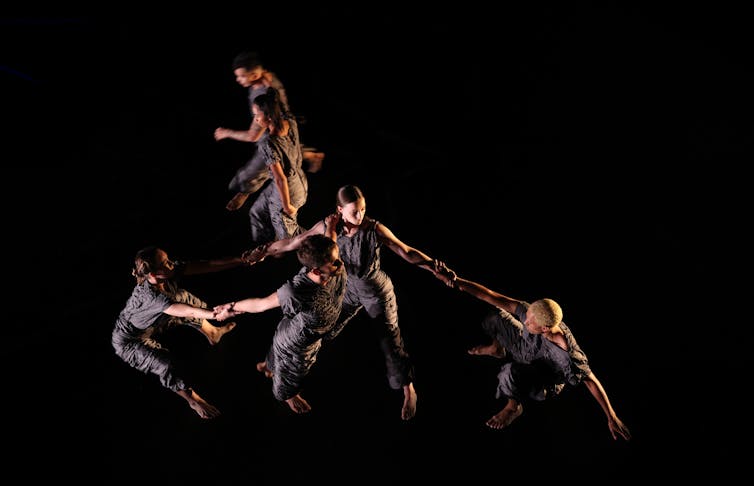
They warp and weft between connection and disconnection, evoking rescue and sacrifice, of each other and themselves.
From our perspective the dancers sometimes seem almost supine. They create images that hold and then just as quickly disintegrate. Their exquisite ensemble work is beautifully sculptured by Bosco Shaw’s lighting design that seems to both hide and reveal.
The work segues seamlessly through variations of movement until the haze lifts to reveal a kind of landscape of markings on the floor. I am reminded of Gertrude Stein’s response upon first looking down at the flat landscape from the window of an aeroplane, of how it consolidated her resistance to the specificity of time and place.
Without familiar reference points we are all time, all space. And so the dancers are individuals, pairs, whole nations, falling away and raising again, together and alone, history passing.
The first act finale introduces another layer to the view from above making gorgeous use of a piece of fabric that billows and falls, engulfs and retracts around the lone figure of dancer (Zee Zunnur). Facilitated by the other dancers it is a mesmerising allusion to the title of the piece.
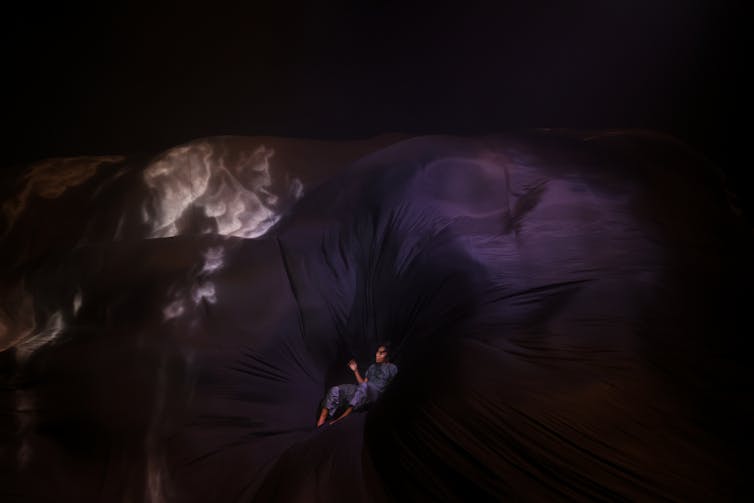
Equal parts hypnotic and repellent, it speaks to a sense of temporality and frailty in the face of unstoppable external forces and it is a particular highlight.
Immersive patience
The second act provides an immediate change of perspective as the audience enters through different doors to arrive on the floor with the dancers. Standing or sitting, we circle the dancers as they enact rituals of devotion, death and burial around the figure of Zunnur.
For the audience, it is an exercise in immersive patience. By the end the actions and focus of the performers have transformed both the space and the atmosphere so there is a sense that we are all breathing together, as equal observers and participants.
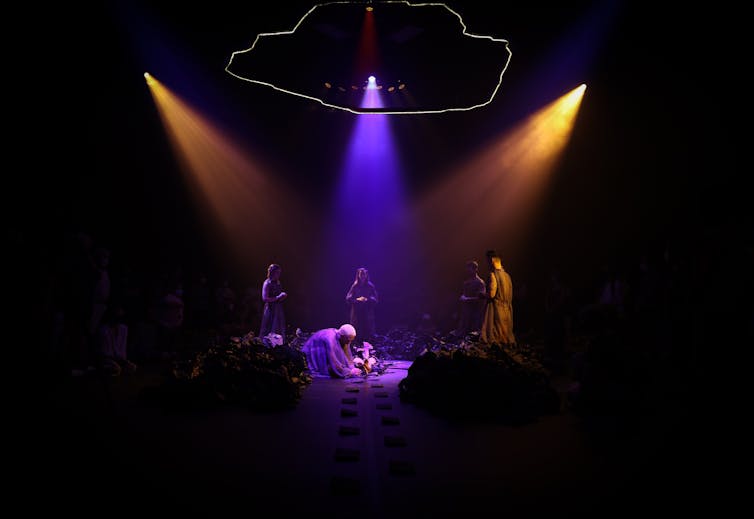
Here again the lighting, sound and design work together exquisitely. The live score, like the bodies of the dancers, builds and breaks down and builds again, constantly transforming, like all of us.
In collaboration with her dancers and creative team, choreographer Rachel Arianne Ogle’s adherence to an exploration of mortality and death is steadfast and all-encompassing.
Casting a cartographical eye on the space between life and death And the Earth will Swallow Them Whole is an impressive collaboration between artists, a work that deals in images and sounds that leave an indelible imprint on the senses.
And the Earth will Swallow Them Whole plays at Perth Festival until February 14.
Leah Mercer does not work for, consult, own shares in or receive funding from any company or organisation that would benefit from this article, and has disclosed no relevant affiliations beyond their academic appointment.
This article was originally published on The Conversation. Read the original article.







